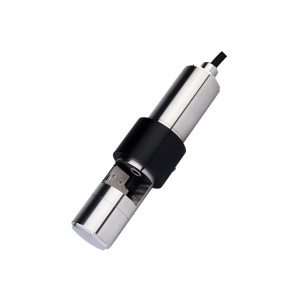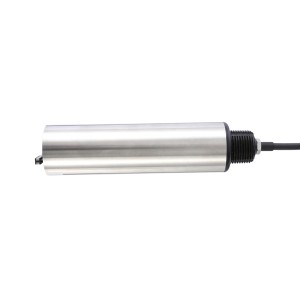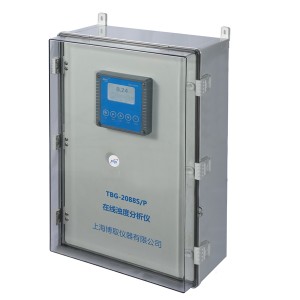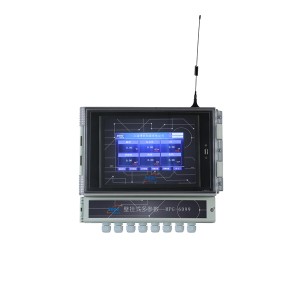Introduction
Online turbidity sensors for on-line measurement of scattered light suspended in the degree of opaque liquid insoluble particulate matter produced by the
body and can quantify levels of suspended particulate matter. Can be widely used in site online turbidity measurements, the power plant, pure water plants,
sewage treatment plants, beverage plants, environmental protection departments, industrial water, wine industry and the pharmaceutical industry, epidemic
prevention departments, hospitals and other departments.
Features
1. Check and clean window every month, with automatic cleaning brush, brush a half hour.
2. Adopt sapphire glass realize easy maintain, when cleaning adopt scratch-resistant sapphire glass, don't worry about the wear surface of window.
3. Compact, not fussy installation place, just put in to can complete the installation.
4. Continuous measurement can be achieved, built-in 4~20mA analog output, can transmit data to the various machine according to the need.
5. Wide measurement range, according to different needs, providing 0-100 degrees, 0-500 degrees, 0-3000 degrees three optional measurement range.
Technical Indexes
| 1. Measuring range | 0~100 NTU, 0~500 NTU, 3000NTU |
| 2. Inlet pressure | 0.3~3MPa |
| 3. Suitable temperature | 5~60℃ |
| 4. Output signal | 4~20mA |
| 5. Features | Online measurement, good stability, free maintenance |
| 6. Accuracy | <FS (Full scale) ± 2% |
| 7. Reproducibility | <FS± 1% |
| 8. Resolution | 0.01NTU |
| 9. Hourly drift | <0.1NTU |
| 10. Relative humidity | <70%RH |
| 11. The power supply | 12V |
| 12. Power consumption | <25W |
| 13. Dimension of the sensor | Φ 32 x163mm (Not including the suspension attachment) |
| 14. Weight | 1.5kg |
| 15. Sensor material | 316L stainless steel |
| 16.Deepest depth | Underwater 2meters |
What is Turbidity?
Turbidity, a measure of cloudiness in liquids, has been recognized as a simple and basic indicator of water quality. It has been used for monitoring drinking water, including that produced by filtration for decades. Turbidity measurement involves the use of a light beam, with defined characteristics, to determine the semi-quantitative presence of particulate material present in the water or other fluid sample. The light beam is referred to as the incident light beam. Material present in the water causes the incident light beam to scatter and this scattered light is detected and quantified relative to a traceable calibration standard. The higher the quantity of the particulate material contained in a sample, the greater the scattering of the incident light beam and the higher the resulting turbidity.
Any particle within a sample that passes through a defined incident light source (often an incandescent lamp, light emitting diode (LED) or laser diode), can contribute to the overall turbidity in the sample. The goal of filtration is to eliminate particles from any given sample. When filtration systems are performing properly and monitored with a turbidimeter, turbidity of the effluent will be characterized by a low and stable measurement. Some turbidimeters become less effective on super-clean waters, where particle sizes and particle count levels are very low. For those turbidimeters that lack sensitivity at these low levels, turbidity changes that result from a filter breach can be so small that it becomes indistinguishable from the turbidity baseline noise of the instrument.
This baseline noise has several sources including the inherent instrument noise (electronic noise), instrument stray light, sample noise, and noise in the light source itself. These interferences are additive and they become the primary source of false positive turbidity responses and can adversely impact the instrument detection limit.

















